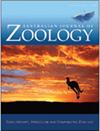Non-invasive monitoring and reintroduction biology of the brush-tailed rock-wallaby (Petrogale penicillata) in the Grampians National Park, Australia
IF 1
4区 生物学
Q3 ZOOLOGY
引用次数: 1
Abstract
Abstract. Thirty-nine endangered brush-tailed rock-wallabies (Petrogale penicillata) were reintroduced to Grampians National Park, western Victoria, between 2008 and 2012. Subsequent high mortality, low breeding, and no recruitment were linked to fox predation and physical disturbance during monitoring. From 2014 to 2017, the colony was left undisturbed and monitored only by remote camera. Five adult animals were identified across this period (1 ♂ and 3 ♀s – all tagged; and one untagged female), and an average of 0.7 pouch young were birthed per tagged female per year. In 2019, camera-monitoring and non-invasive genetic monitoring (faecal) were used to identify colony members, genetic diversity, and breeding. Camera monitoring in 2019 identified the same five individuals, whereas genetic monitoring using 12 microsatellites identified eight individuals (two male and six female genotypes). Genetic diversity within the colony was moderate (expected heterozygosity (He) = 0.655, observed heterozygosity (Ho) = 0.854). Leaving the colony undisturbed after 2013 correlated with improved adult survival, increased breeding, and successful recruitment of young to the population. Recommendations for the Grampians colony include continuation of regular camera- and scat monitoring to improve our understanding of the reintroduction biology of P. penicillata and other marsupials in open, unfenced landscapes.澳大利亚格兰屏国家公园中刷尾岩小袋鼠(Petrogale penicillata)的无创监测和重新引入生物学
摘要2008年至2012年间,39只濒危的刷尾岩小袋鼠(Petrogale penicillata)被重新引入维多利亚西部的格兰屏国家公园。随后的高死亡率、低繁殖率和没有招募与监测期间狐狸的捕食和身体干扰有关。从2014年到2017年,这个群体没有受到干扰,只通过远程摄像机进行监控。在此期间鉴定了5只成年动物(1只公鼠和3只母鼠),均有标记;一只未被标记的雌性),每只被标记的雌性每年平均产下0.7只育儿袋幼崽。2019年,使用摄像机监测和非侵入性遗传监测(粪便)来识别群体成员、遗传多样性和繁殖。2019年的摄像机监测发现了同样的5个个体,而使用12个微卫星的遗传监测发现了8个个体(2个雄性和6个雌性基因型)。群体内遗传多样性中等(期望杂合度(He) = 0.655,观察杂合度(Ho) = 0.854)。在2013年之后保持种群不受干扰与成虫存活率的提高、繁殖的增加和成功招募年轻种群相关。对格兰屏殖民地的建议包括继续定期进行相机和粪便监测,以提高我们对青霉菌和其他有袋动物在开放、无围栏景观中的重新引入生物学的理解。
本文章由计算机程序翻译,如有差异,请以英文原文为准。
求助全文
约1分钟内获得全文
求助全文
来源期刊
CiteScore
2.40
自引率
0.00%
发文量
12
审稿时长
>12 weeks
期刊介绍:
Australian Journal of Zoology is an international journal publishing contributions on evolutionary, molecular and comparative zoology. The journal focuses on Australasian fauna but also includes high-quality research from any region that has broader practical or theoretical relevance or that demonstrates a conceptual advance to any aspect of zoology. Subject areas include, but are not limited to: anatomy, physiology, molecular biology, genetics, reproductive biology, developmental biology, parasitology, morphology, behaviour, ecology, zoogeography, systematics and evolution.
Australian Journal of Zoology is a valuable resource for professional zoologists, research scientists, resource managers, environmental consultants, students and amateurs interested in any aspect of the scientific study of animals.
Australian Journal of Zoology is published with the endorsement of the Commonwealth Scientific and Industrial Research Organisation (CSIRO) and the Australian Academy of Science.

 求助内容:
求助内容: 应助结果提醒方式:
应助结果提醒方式:


